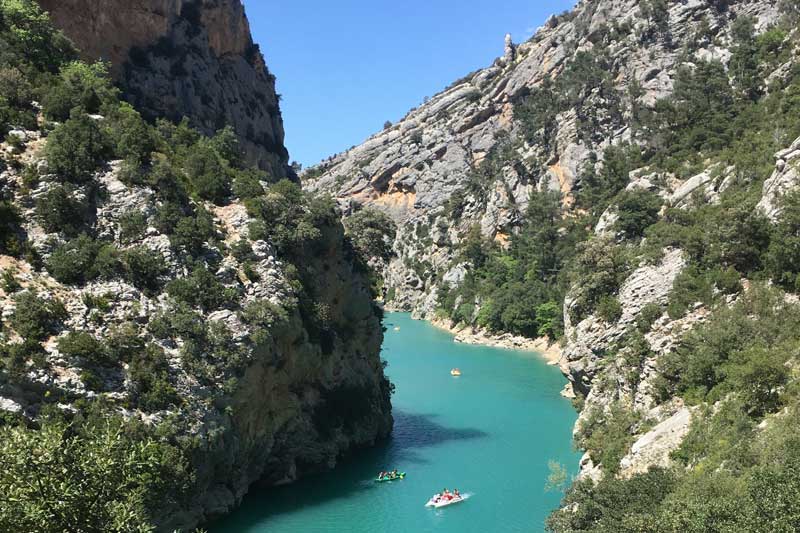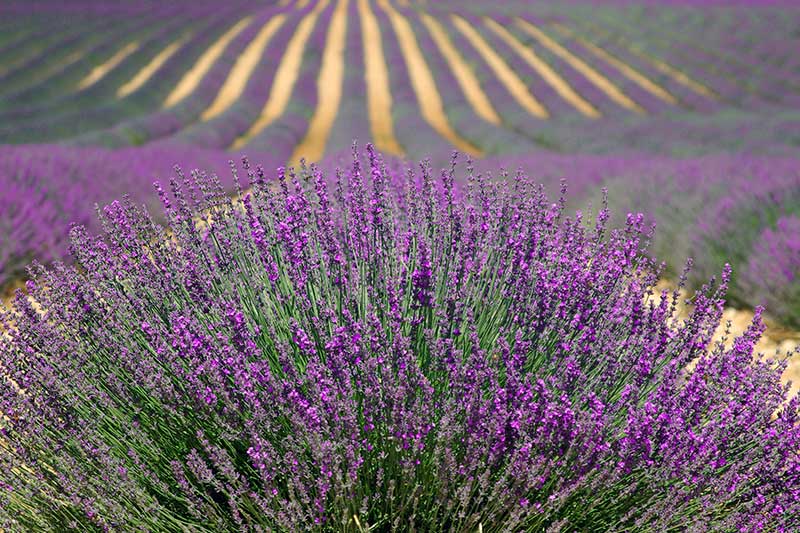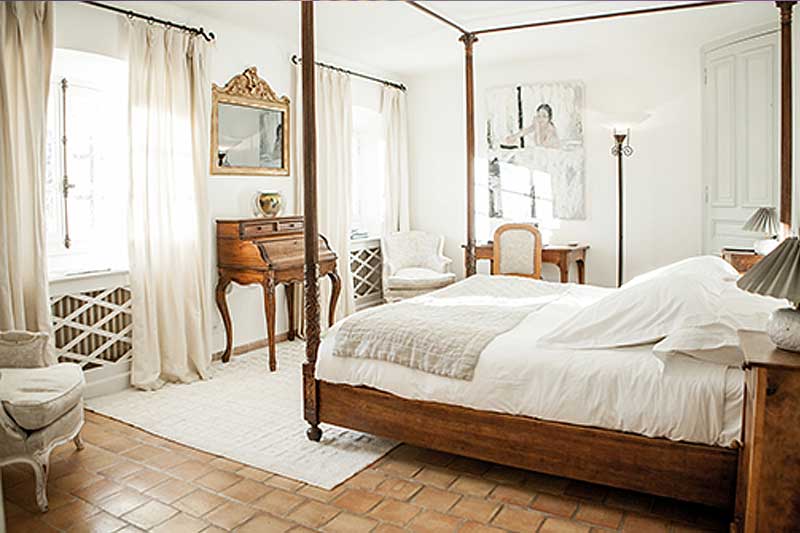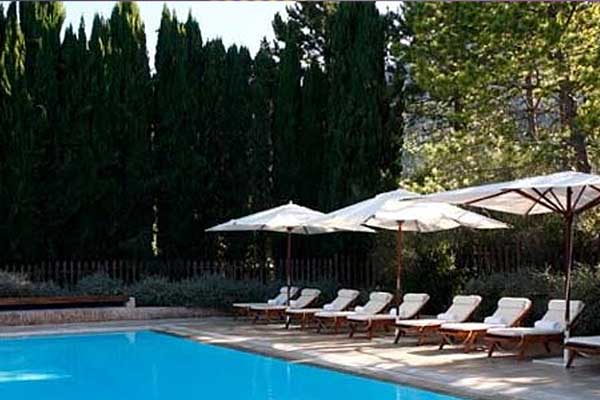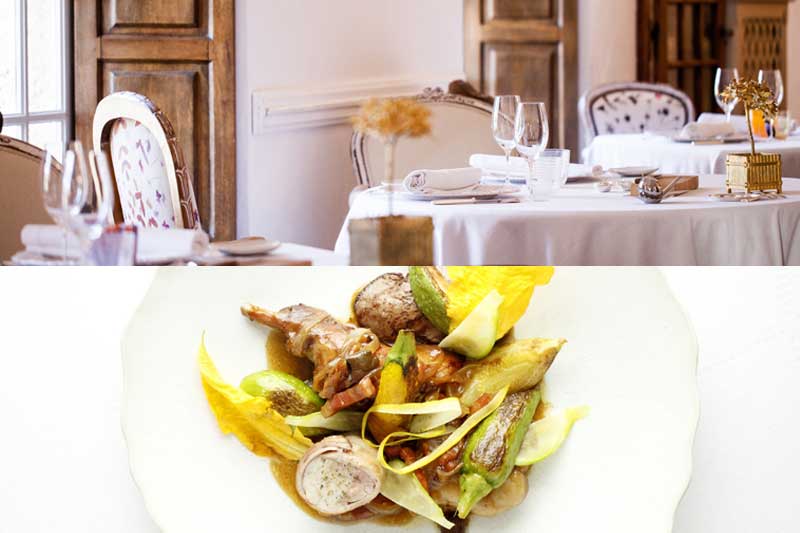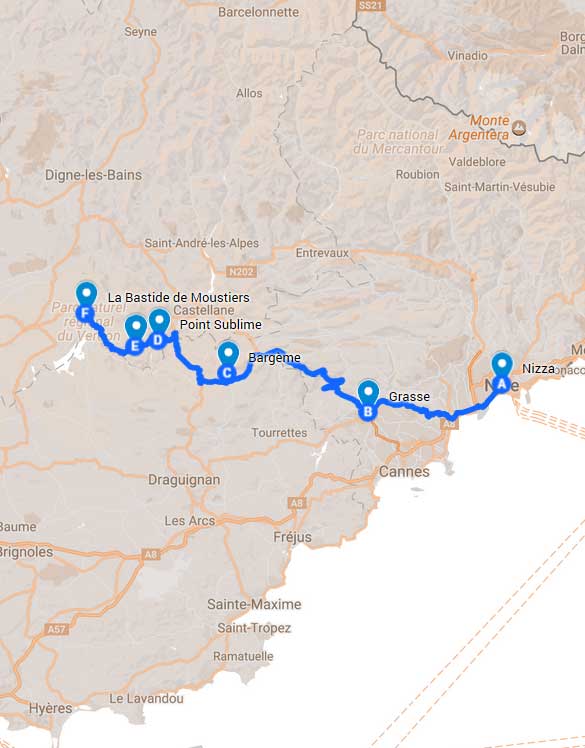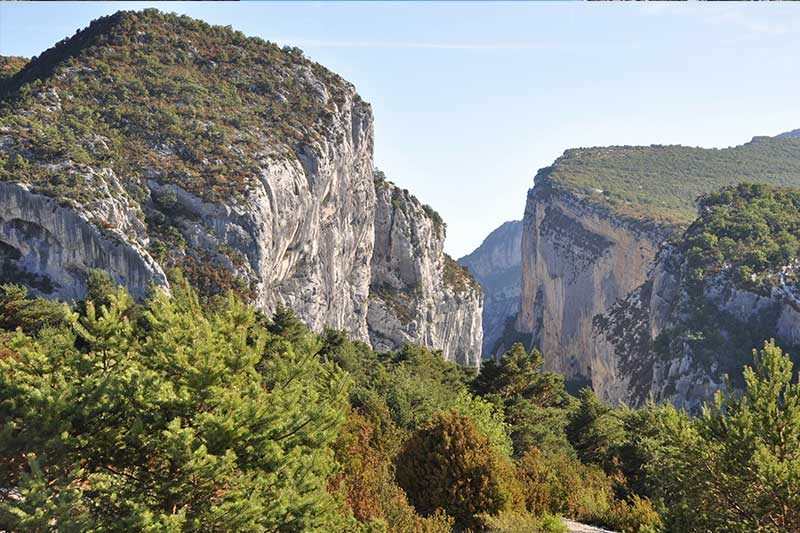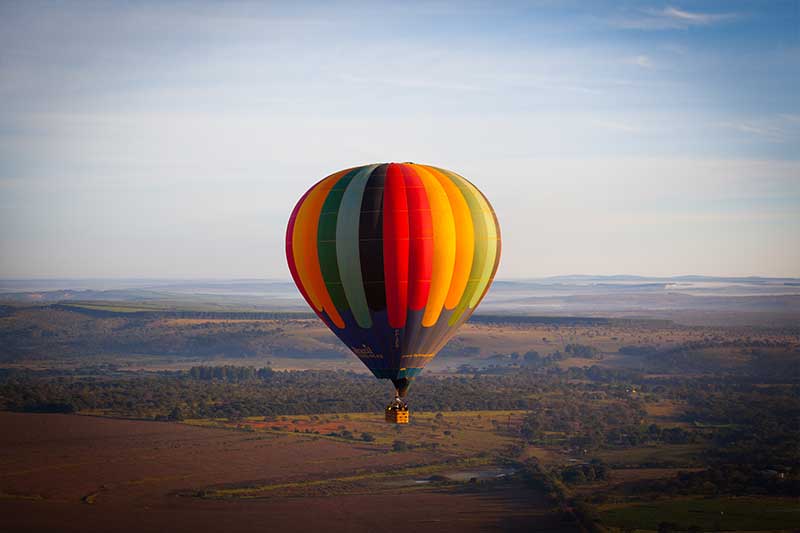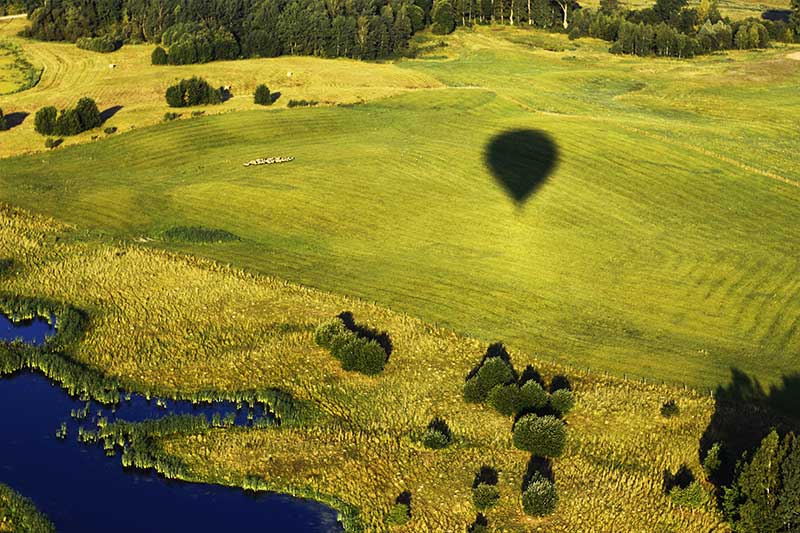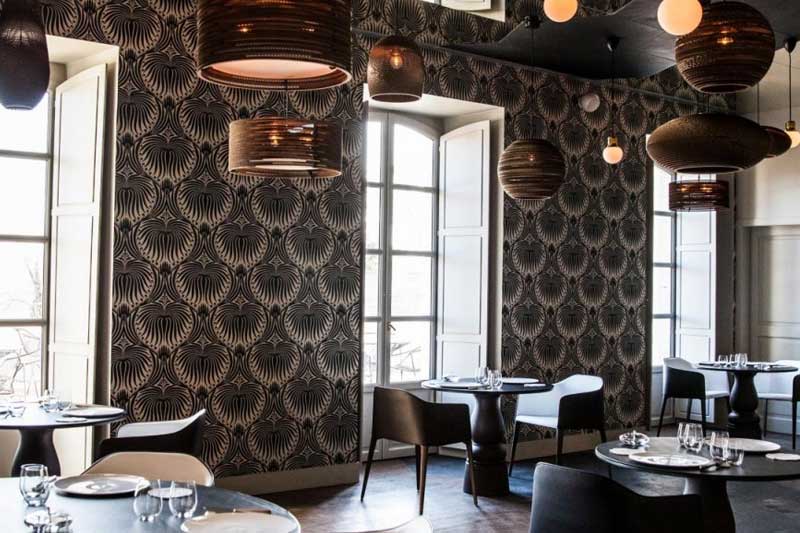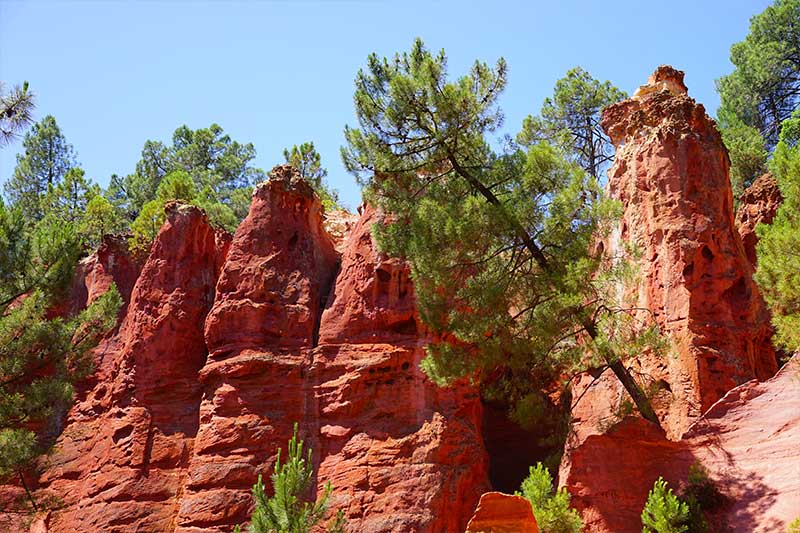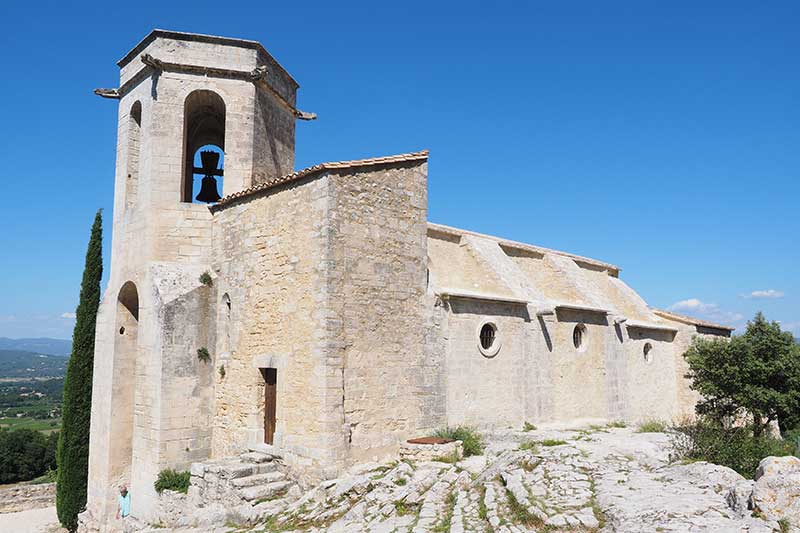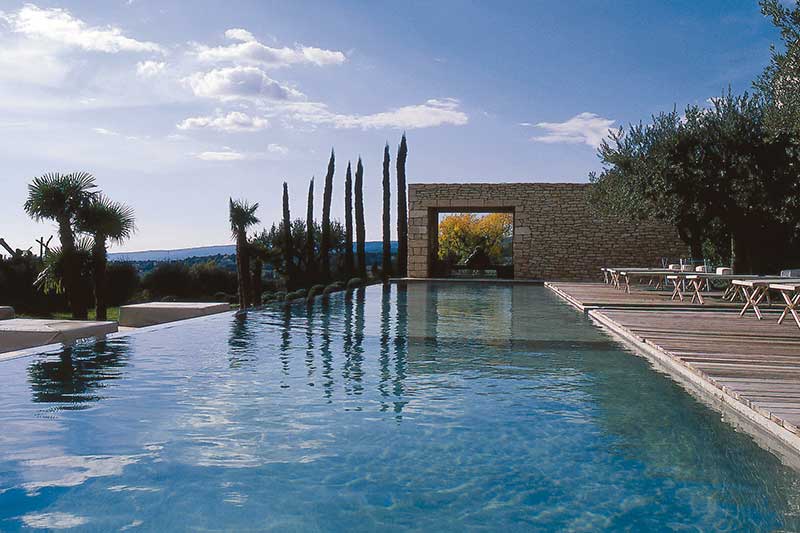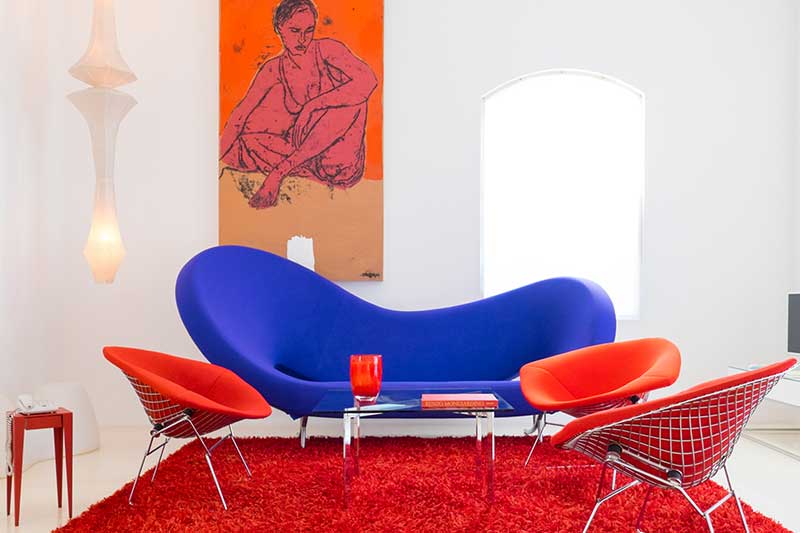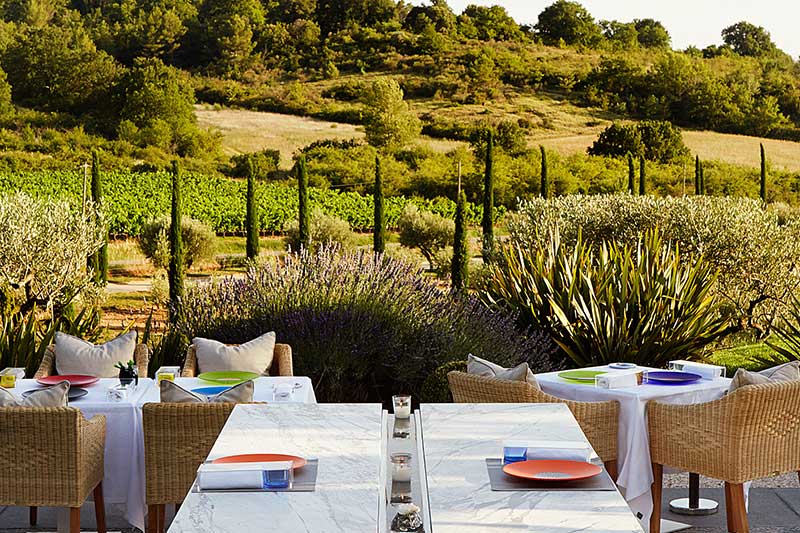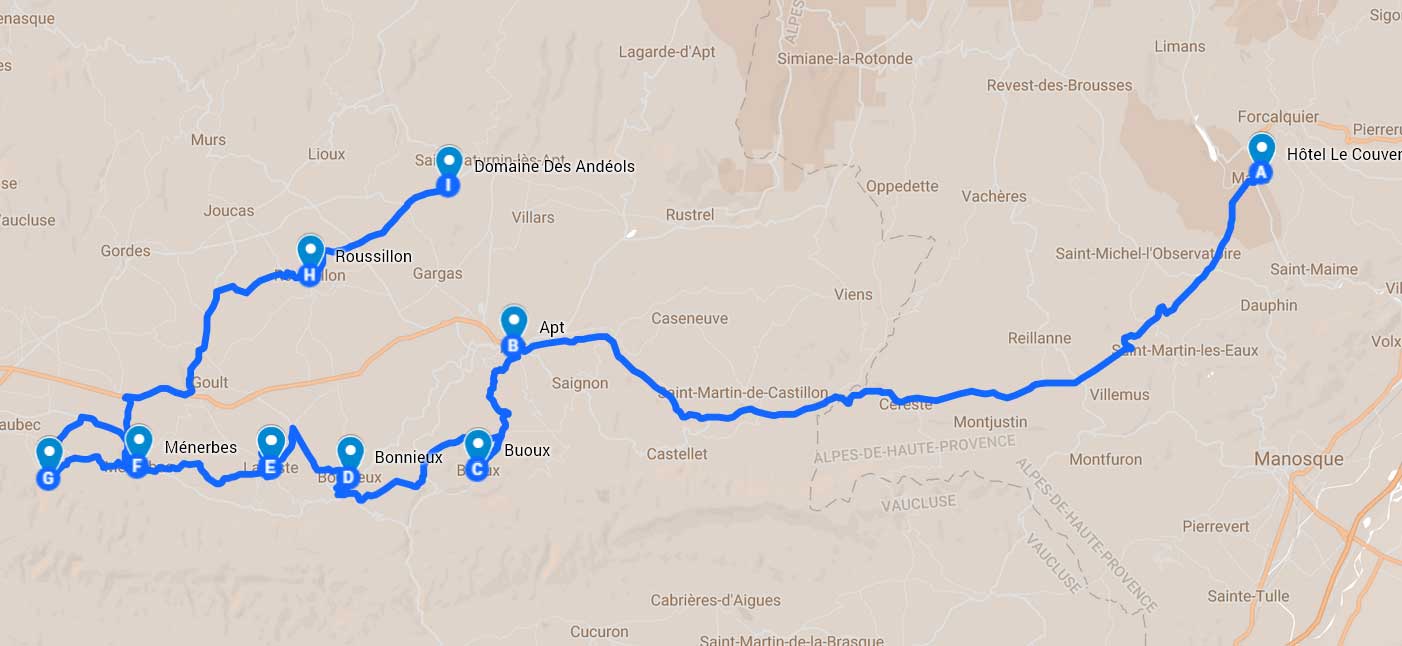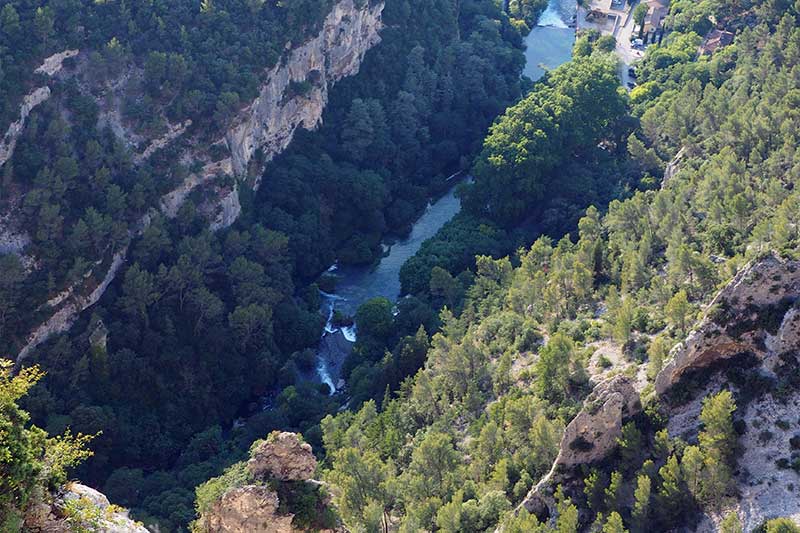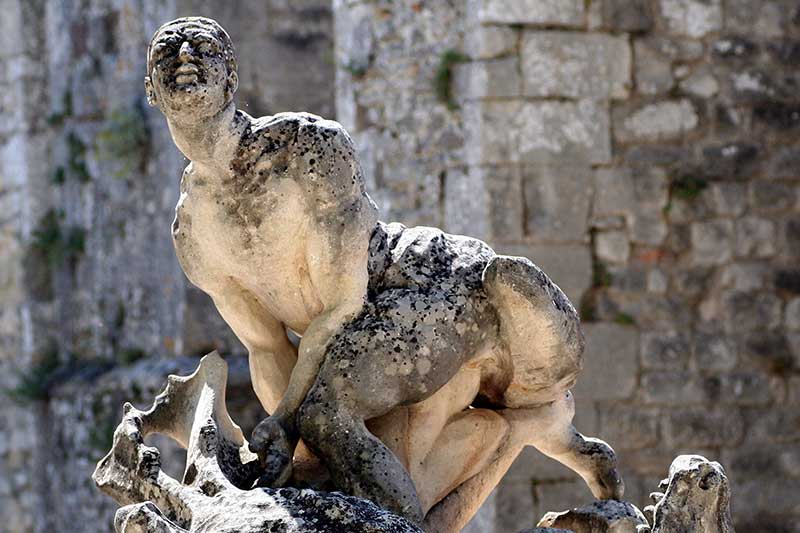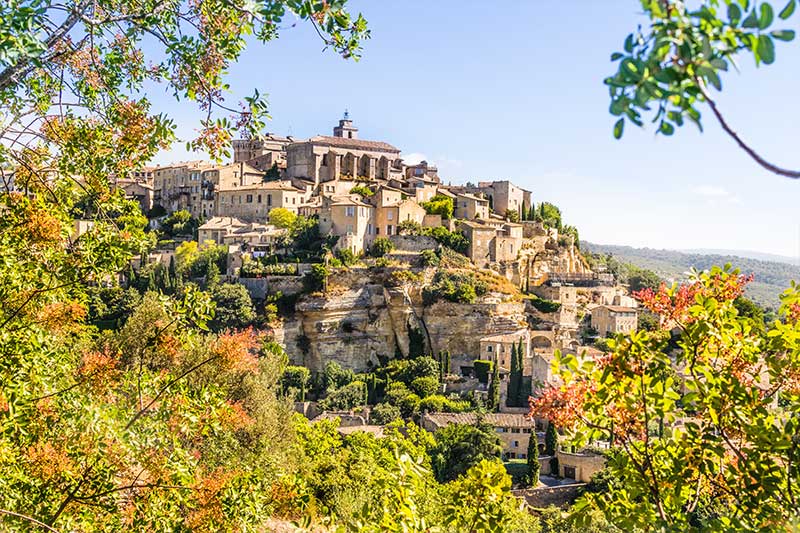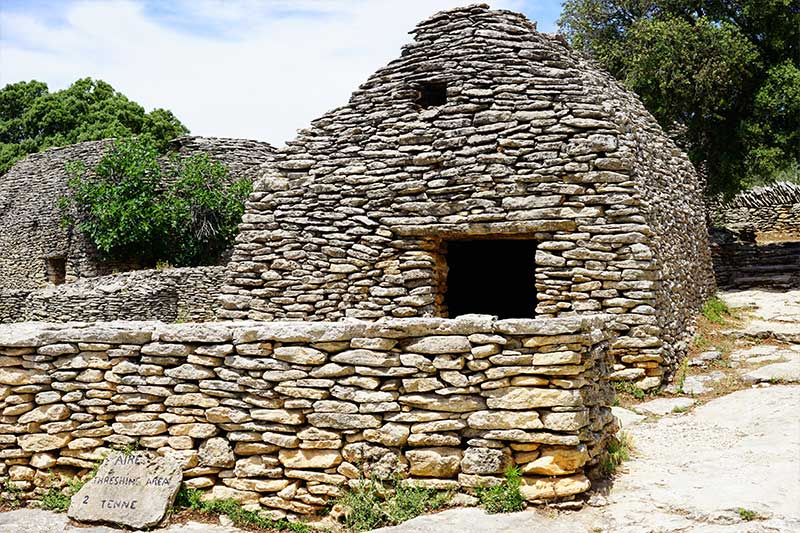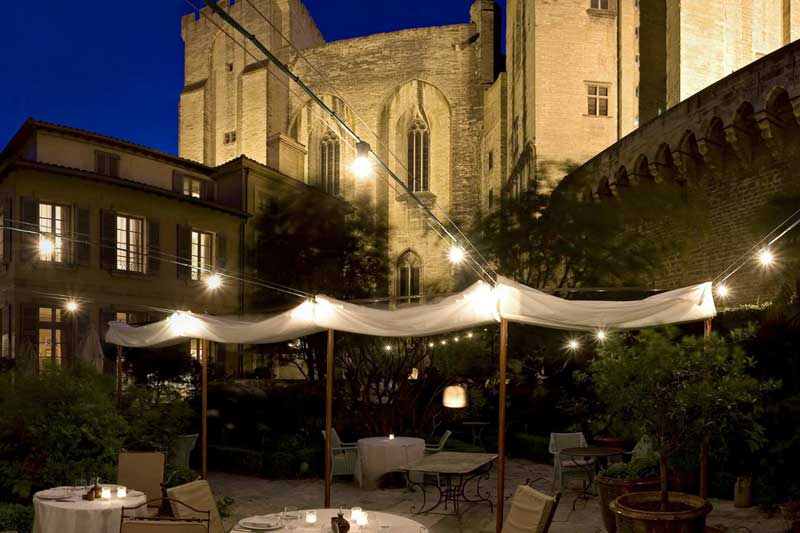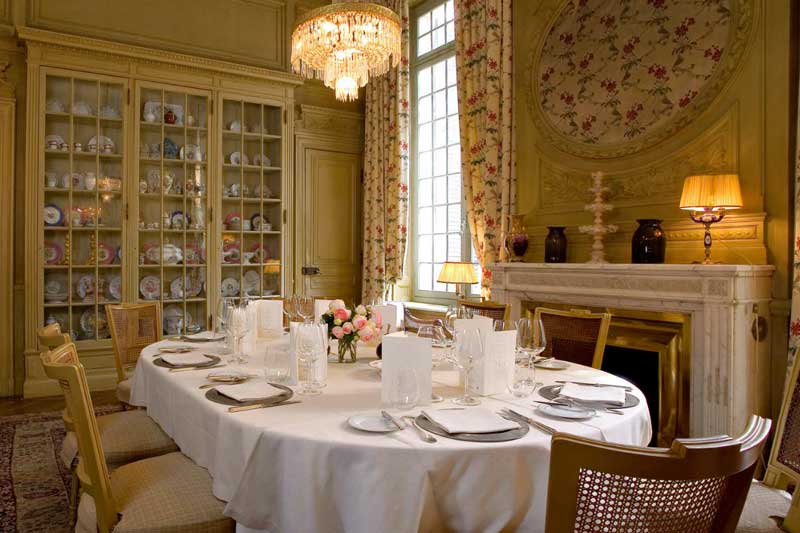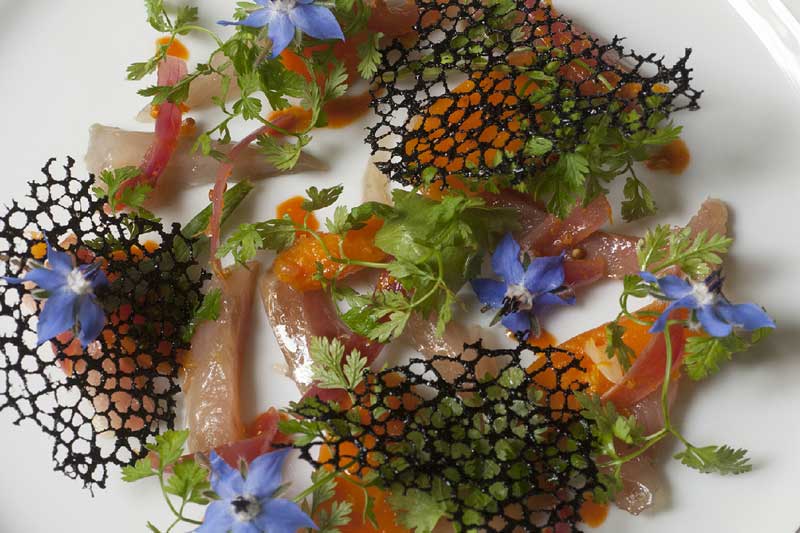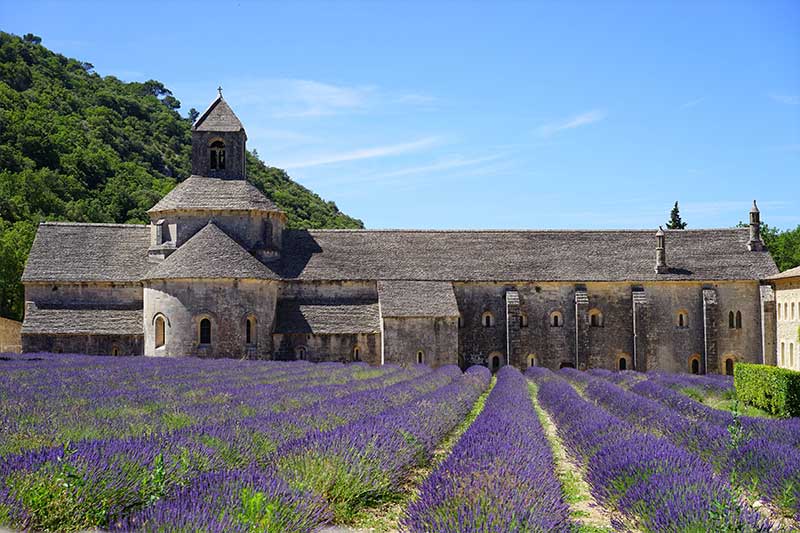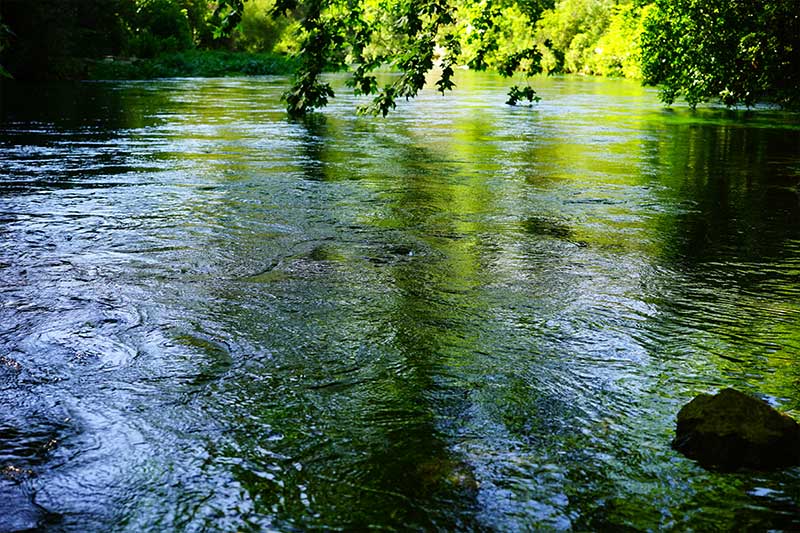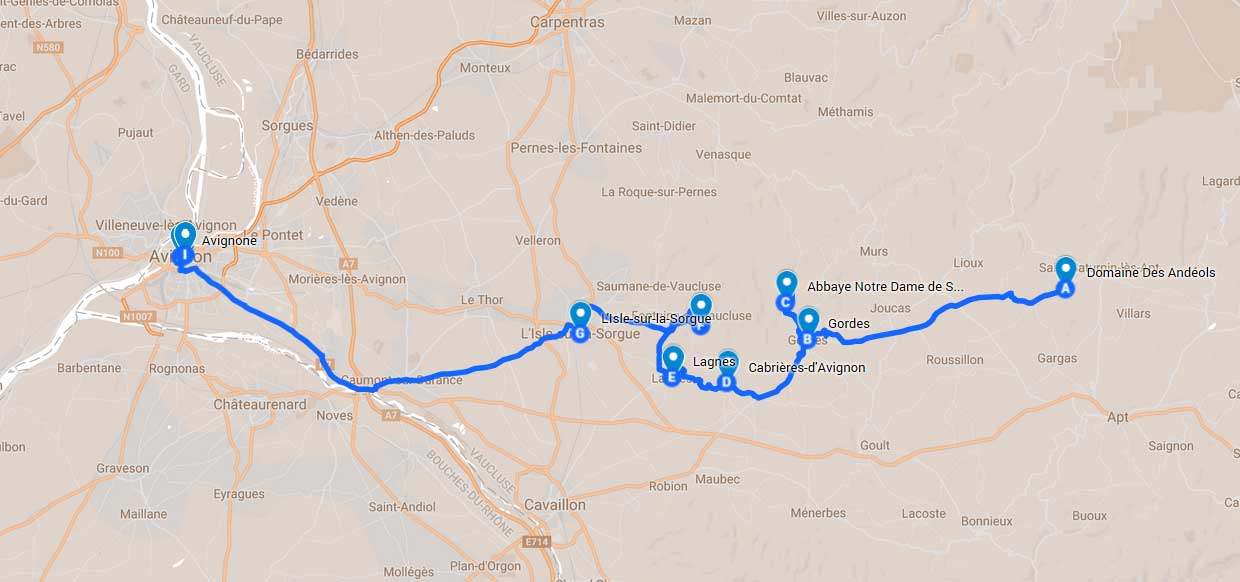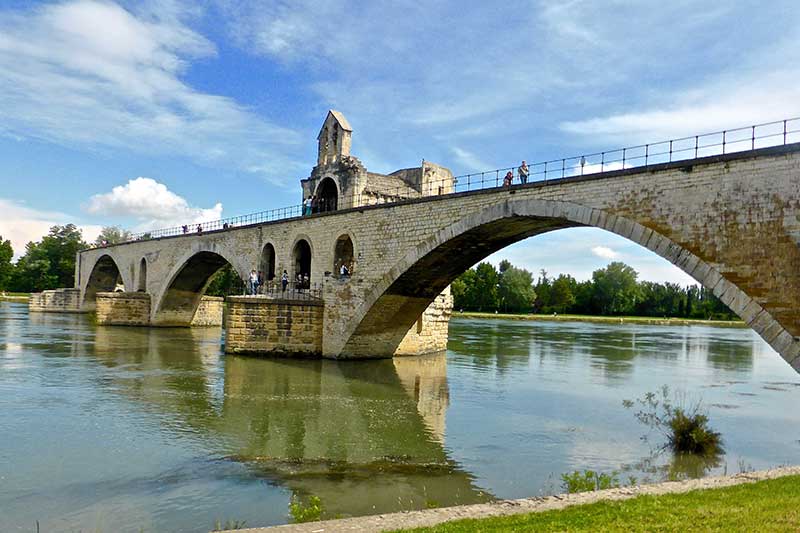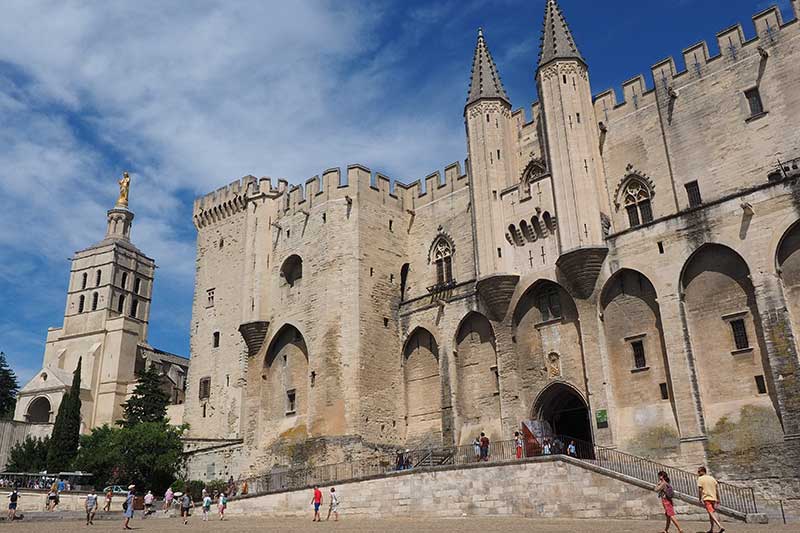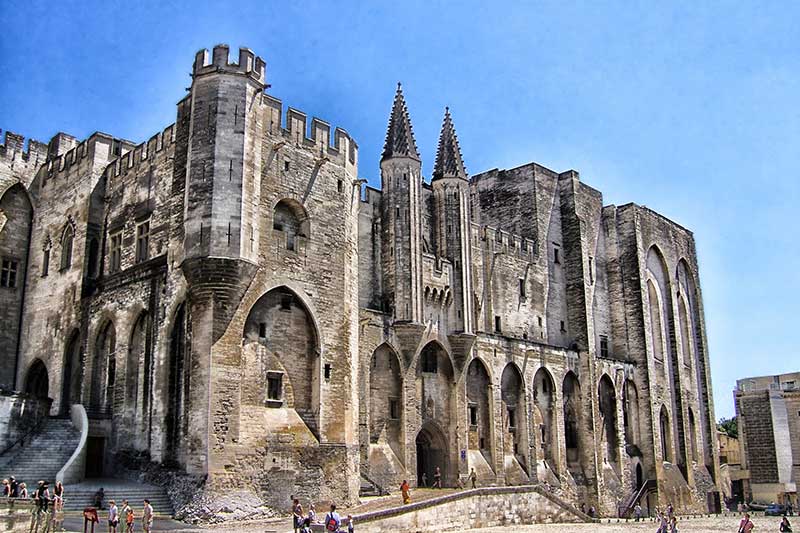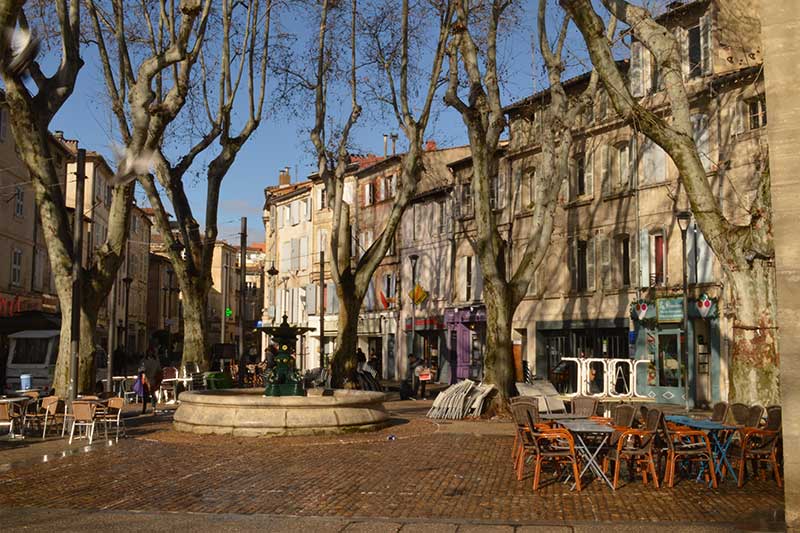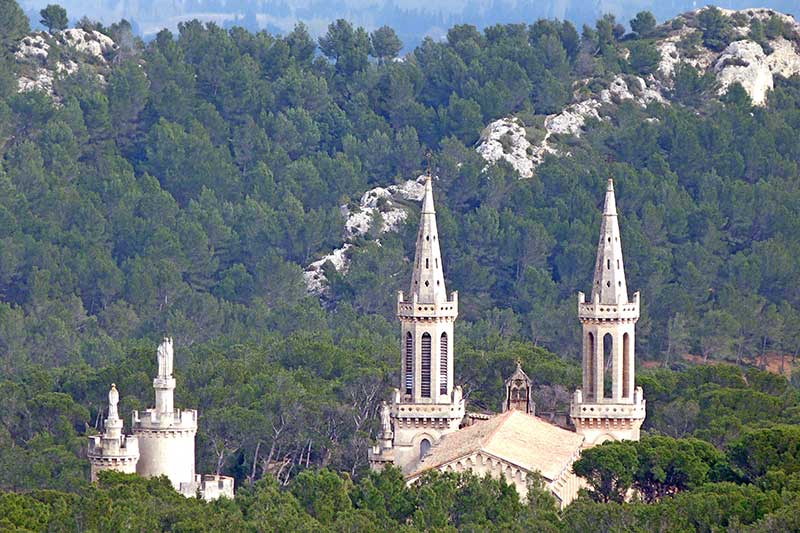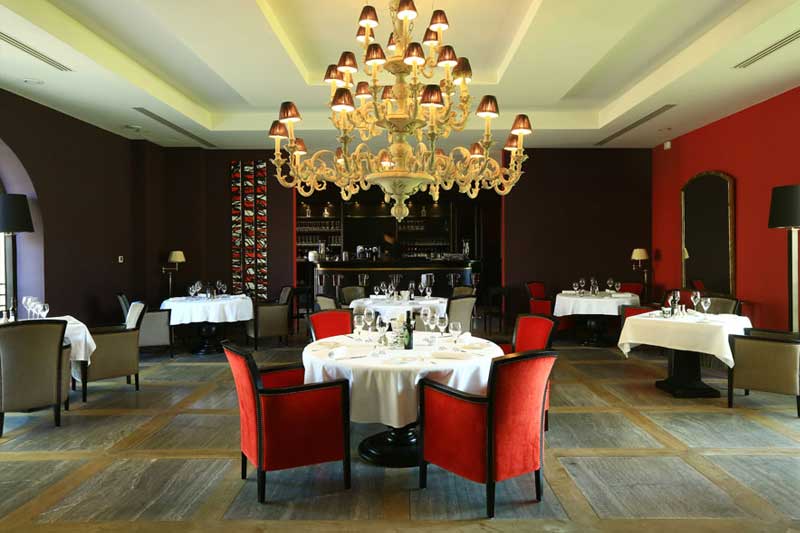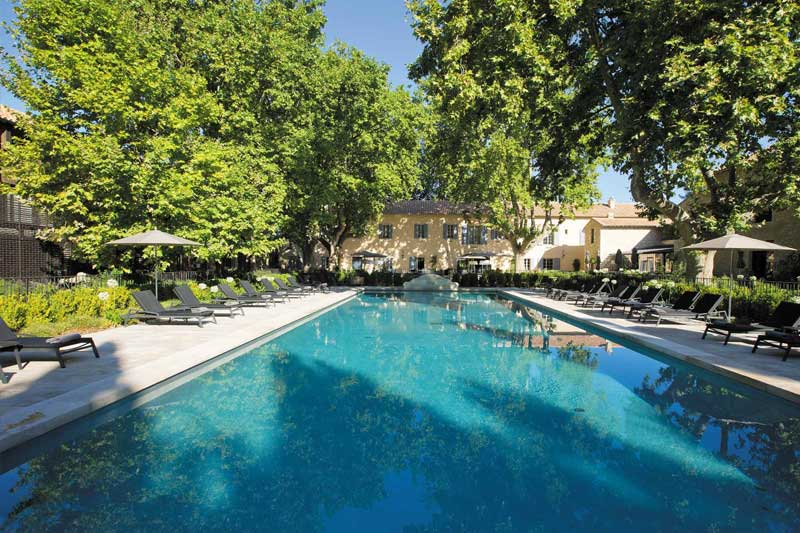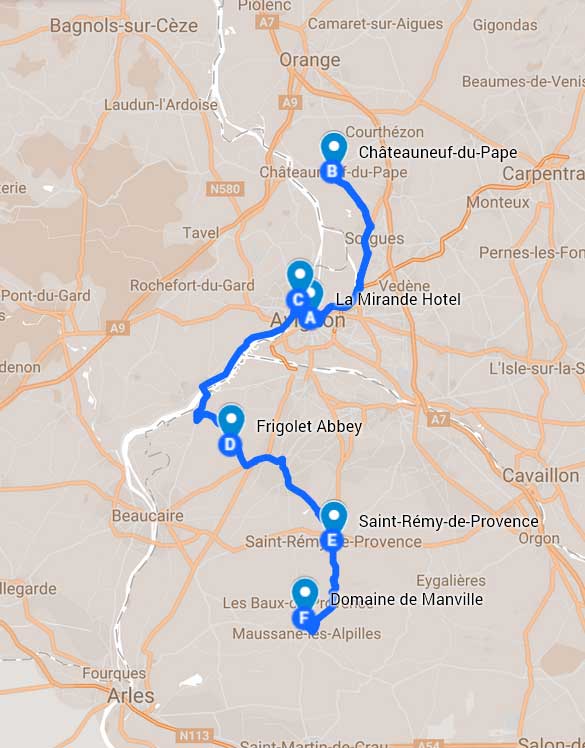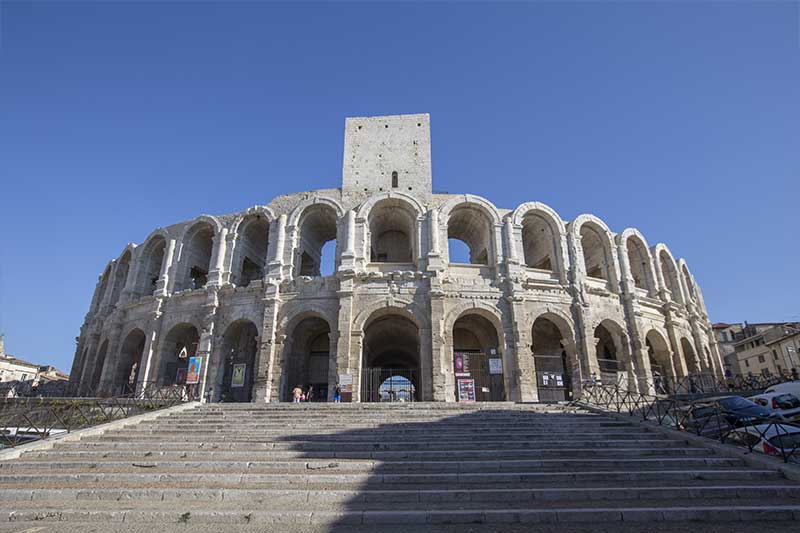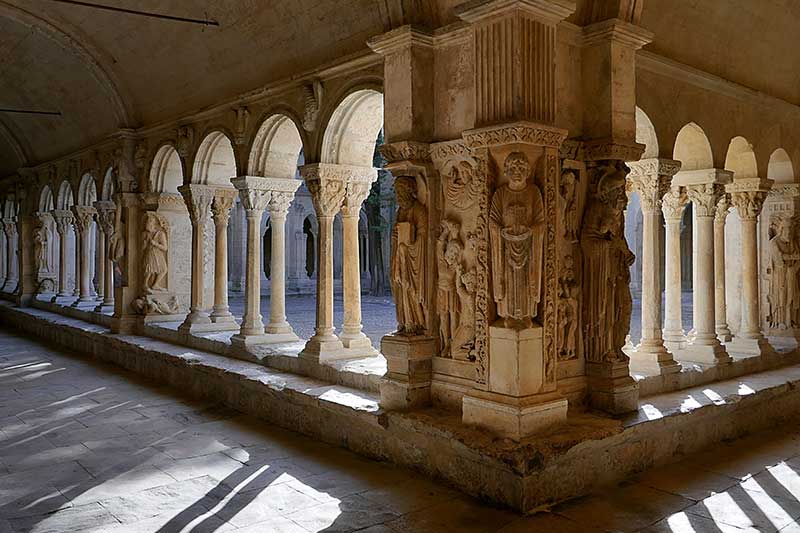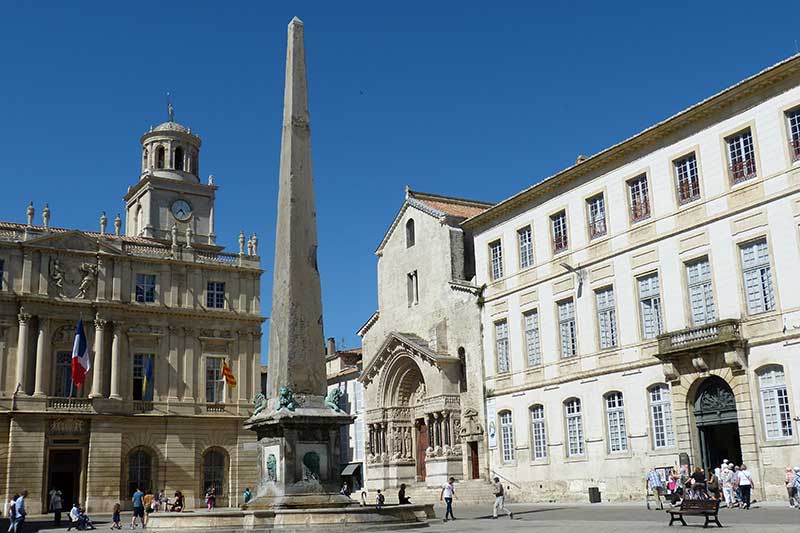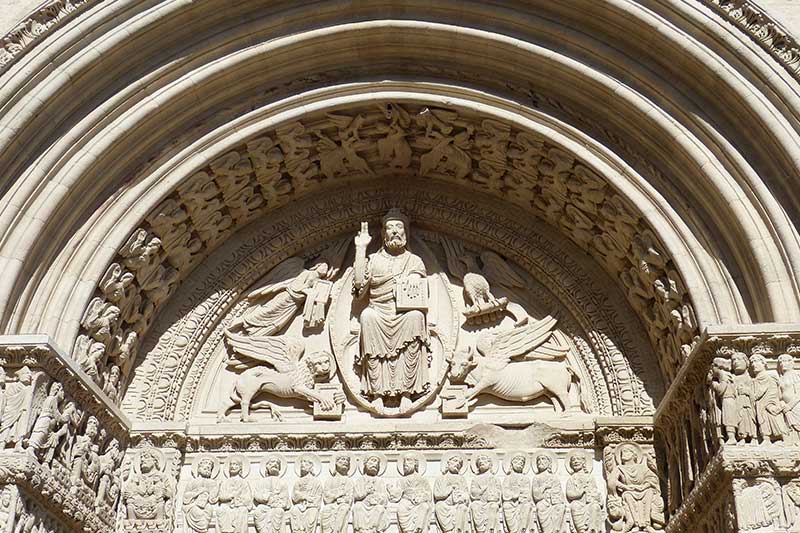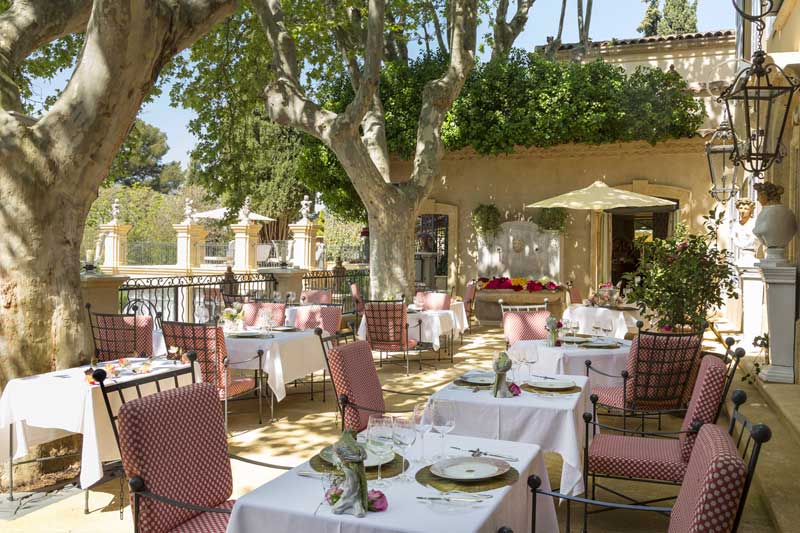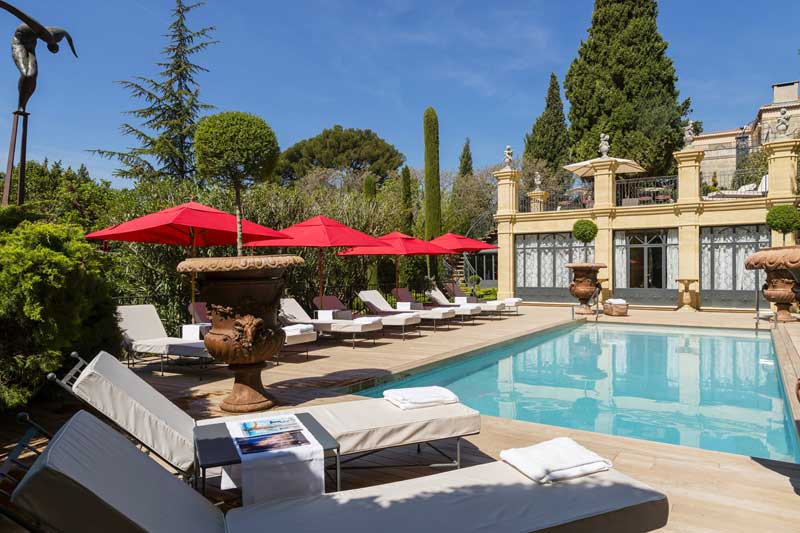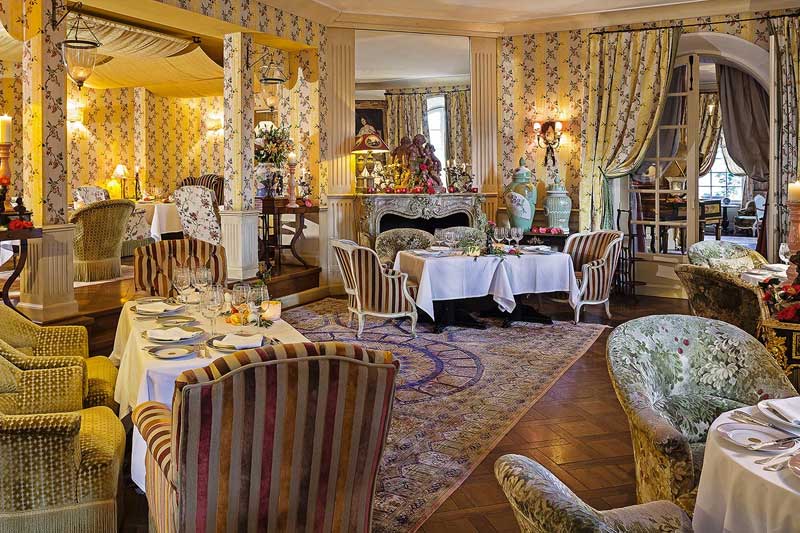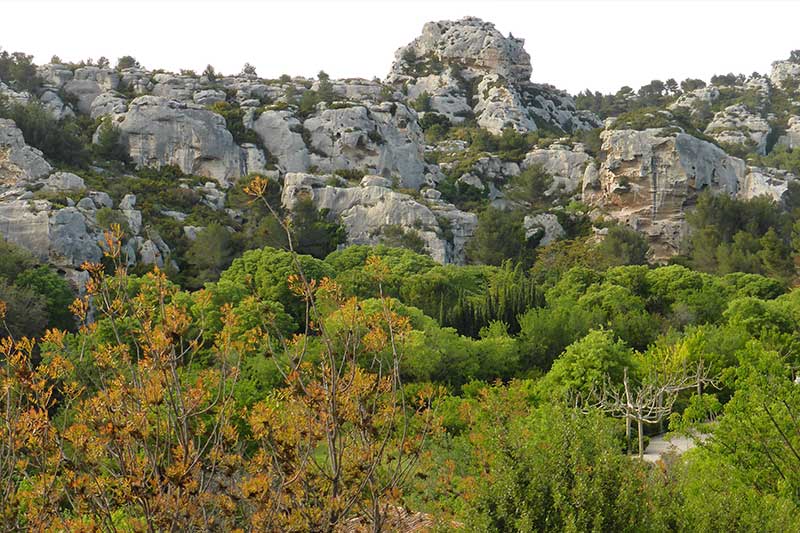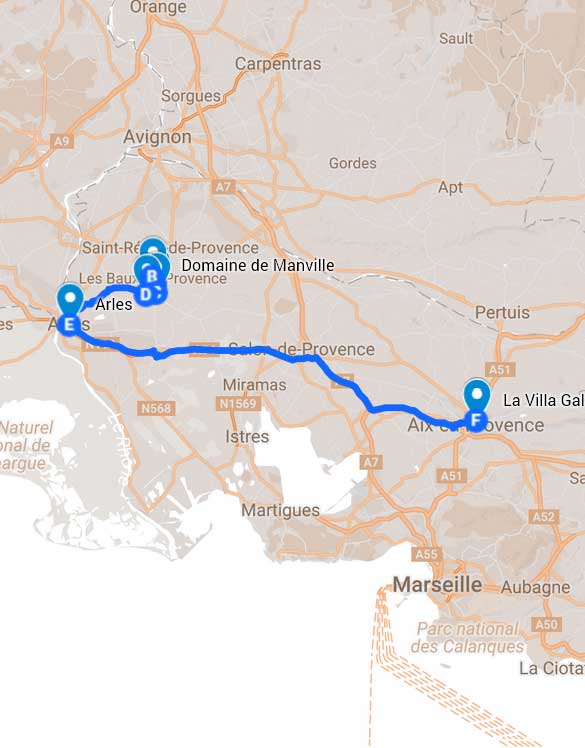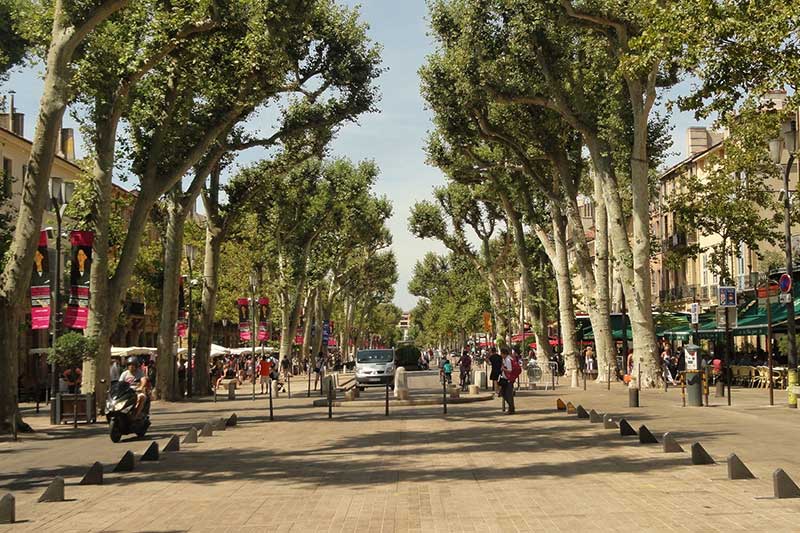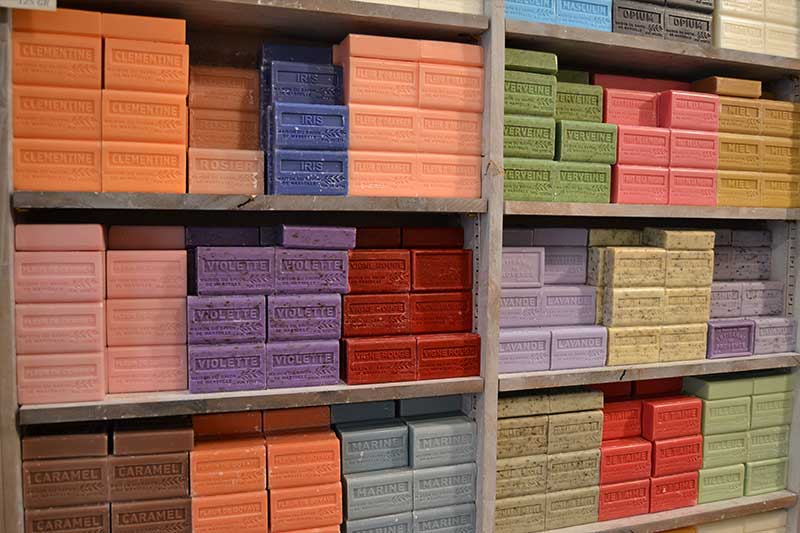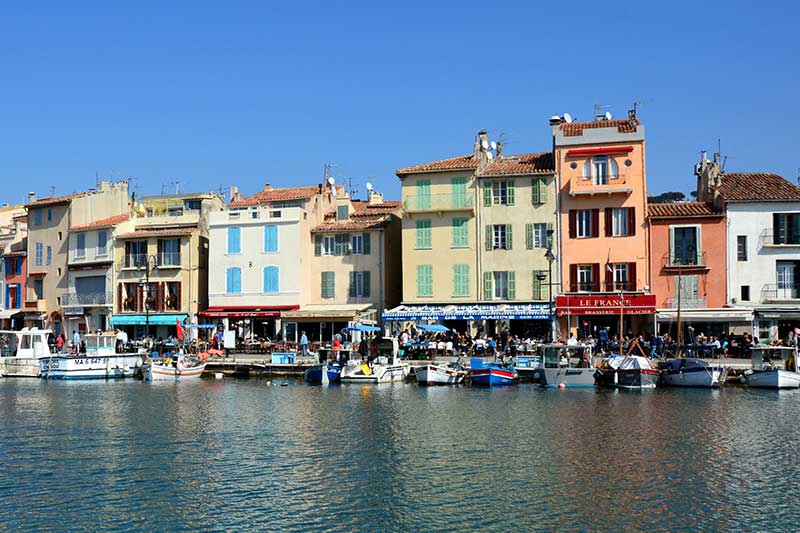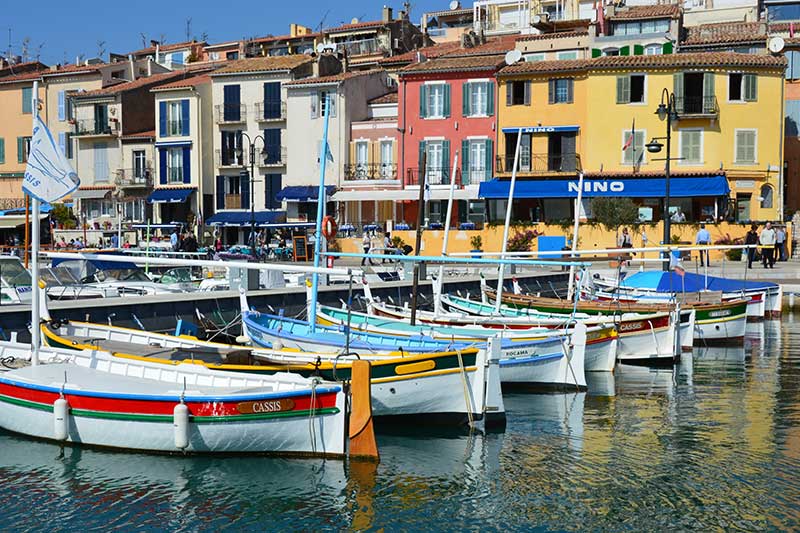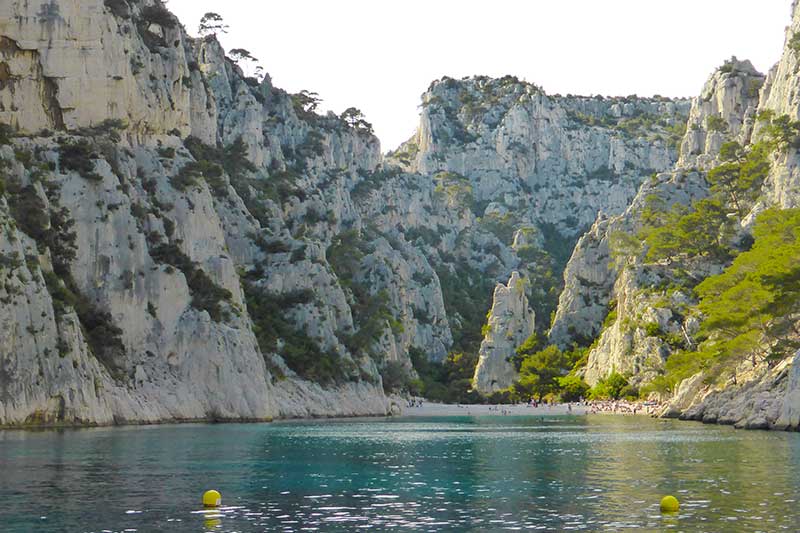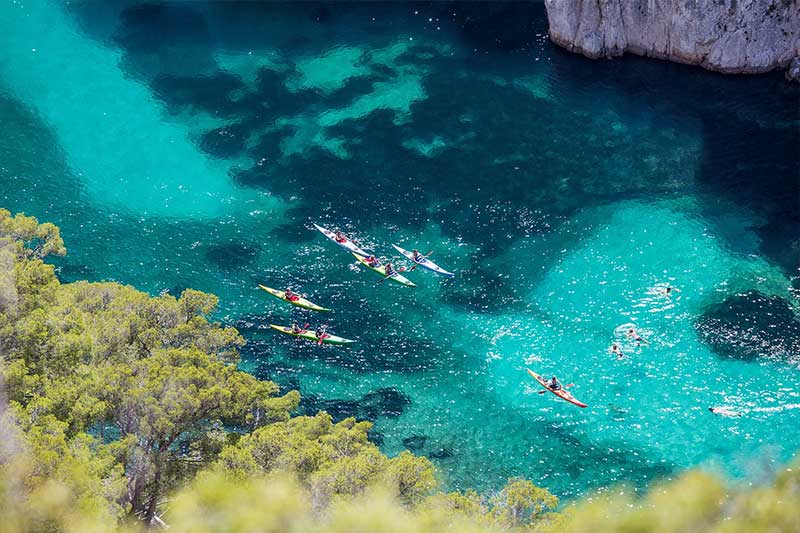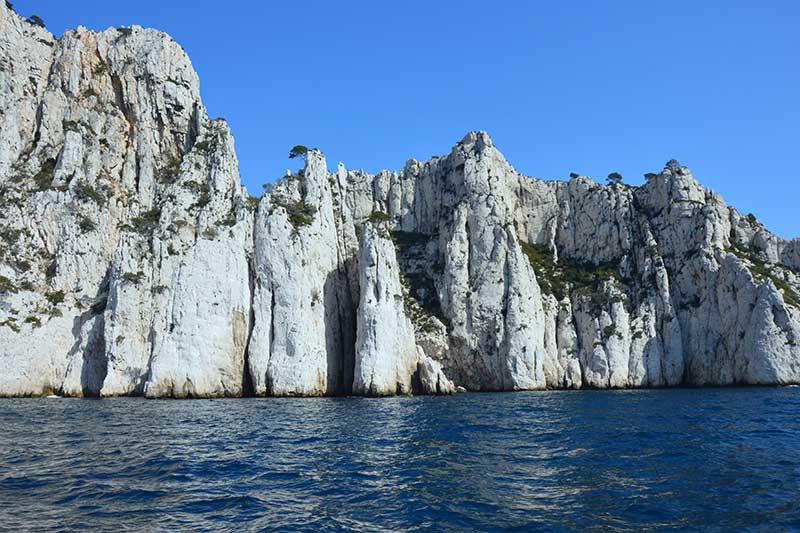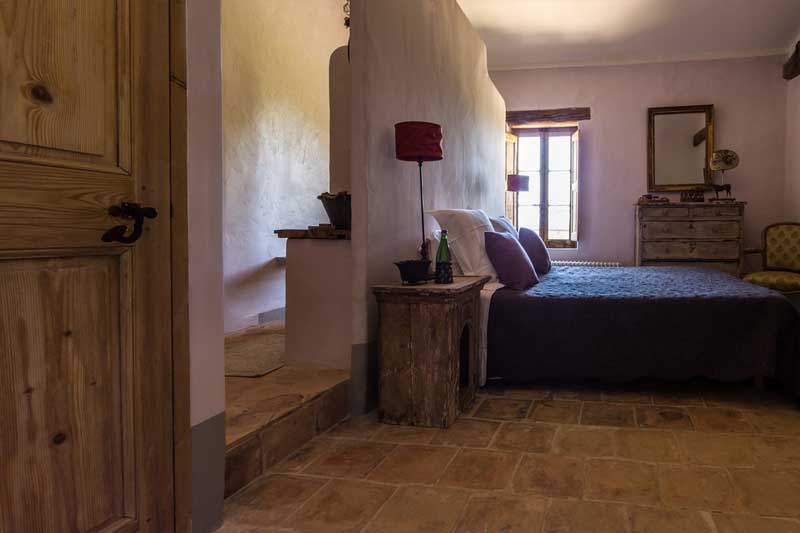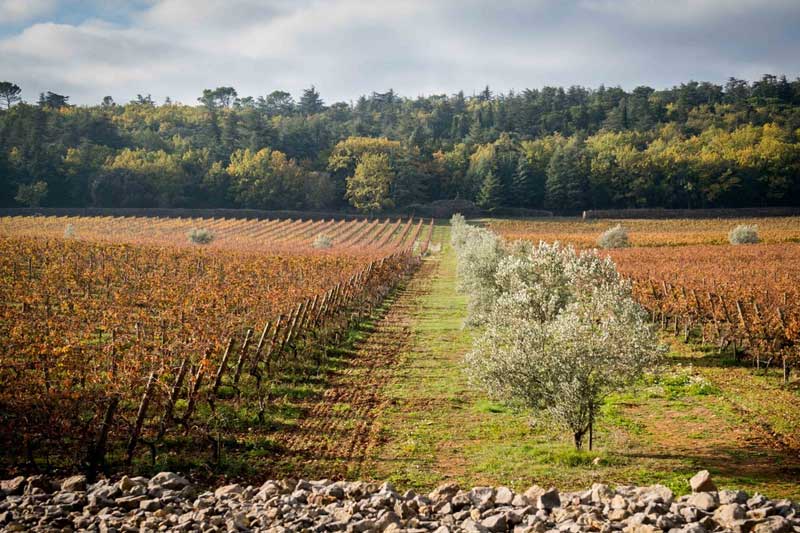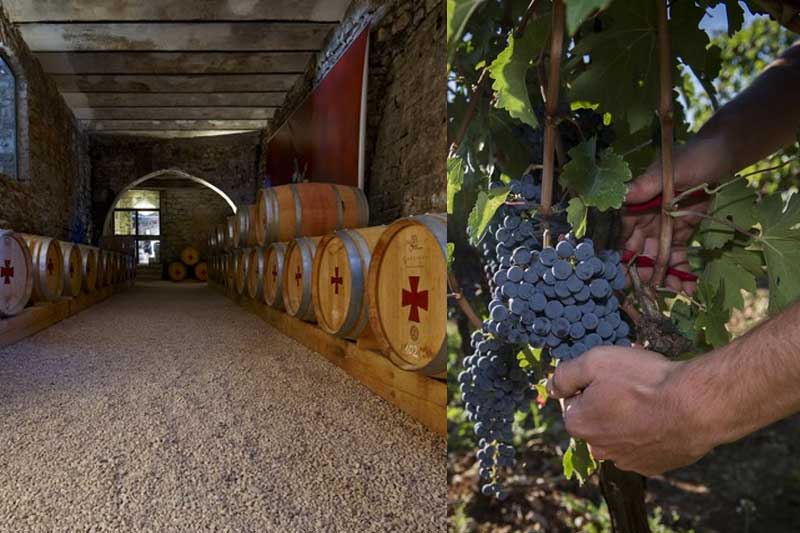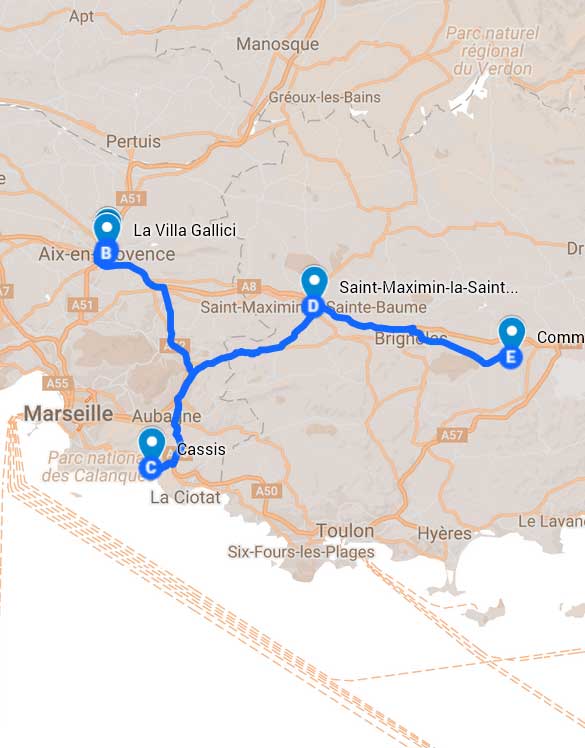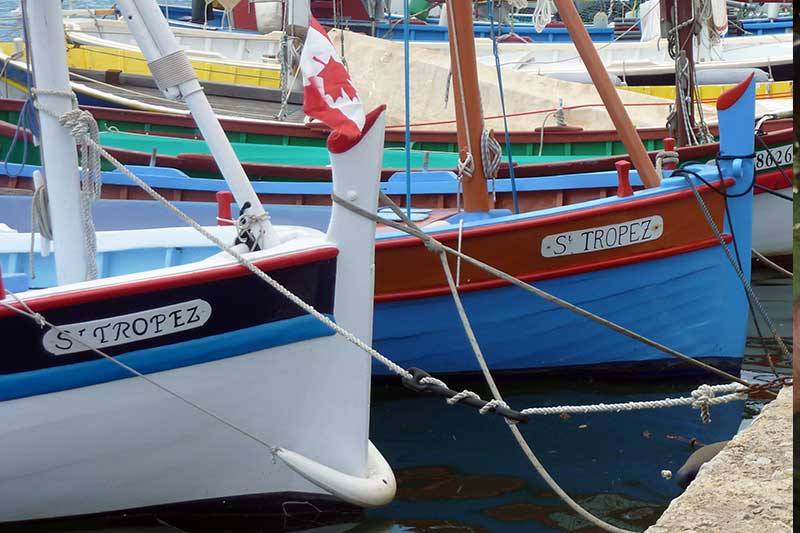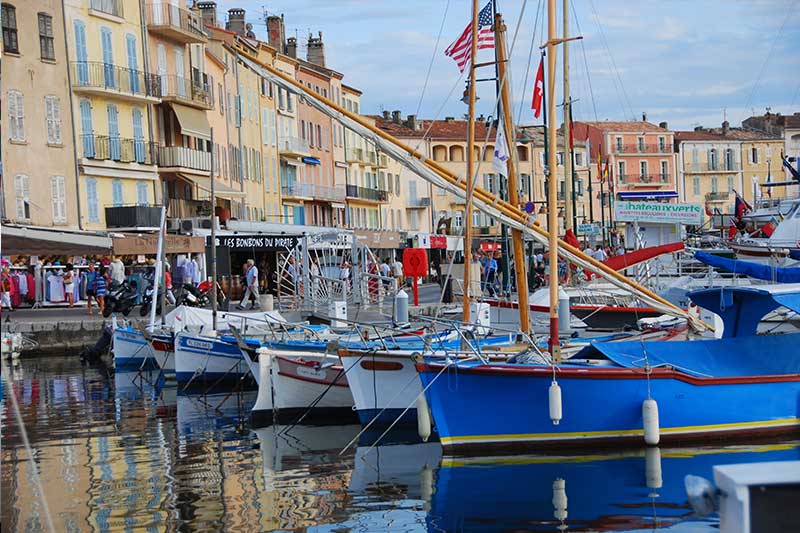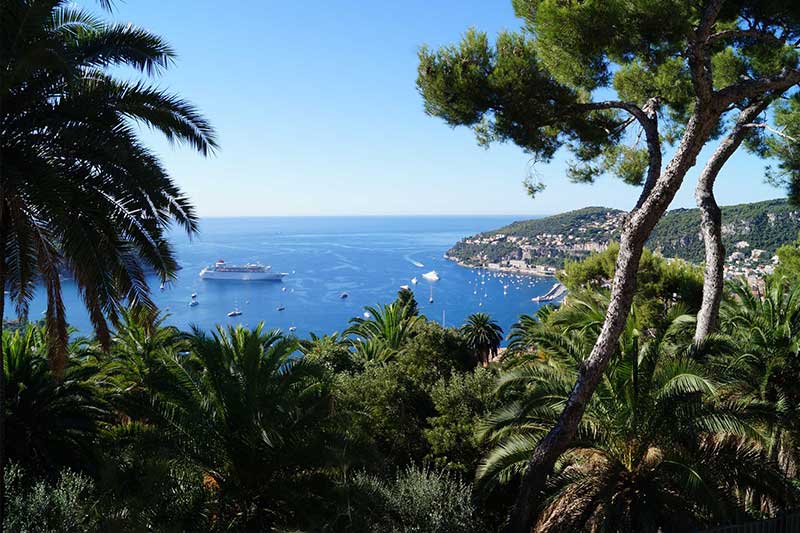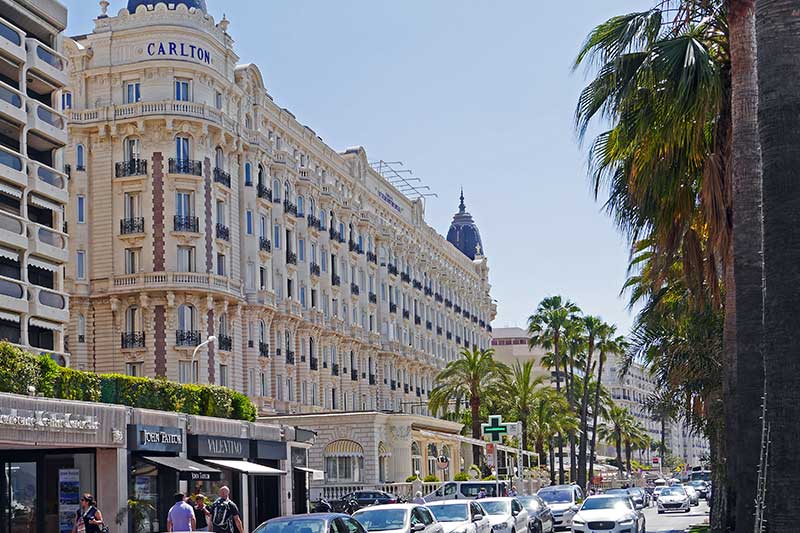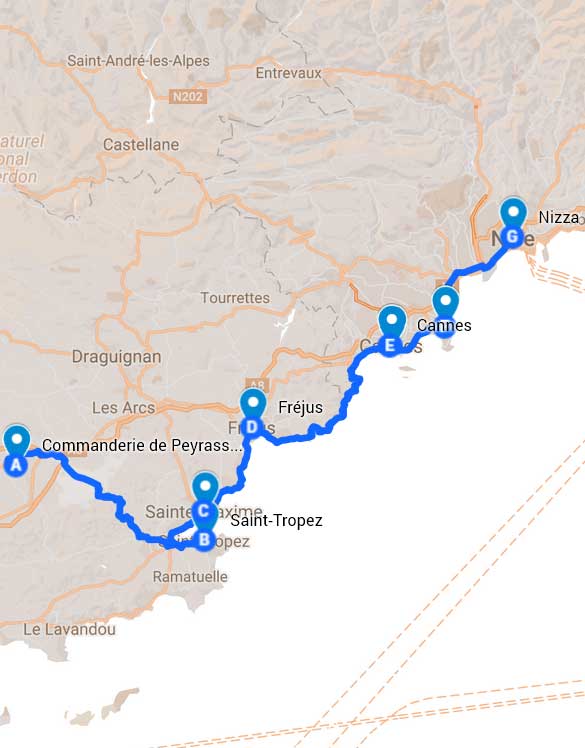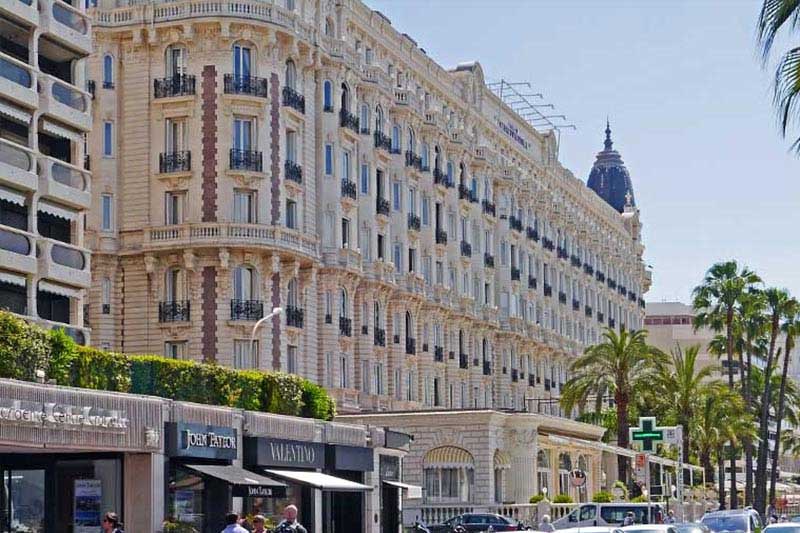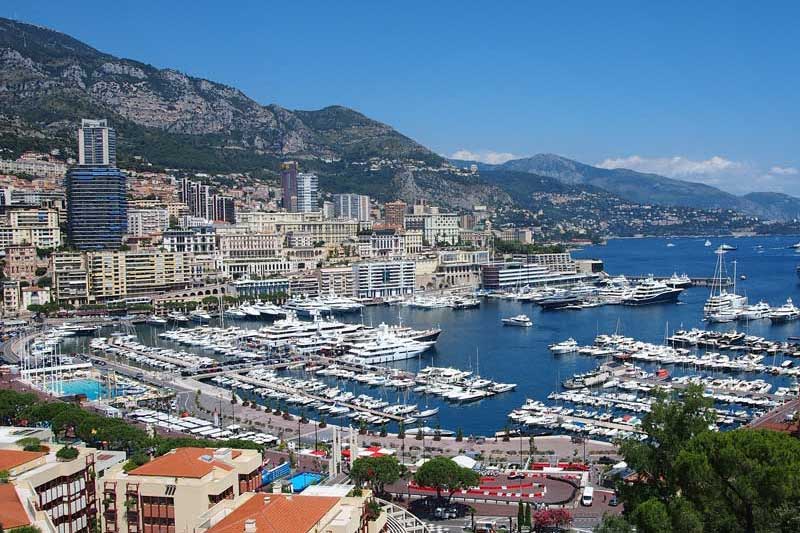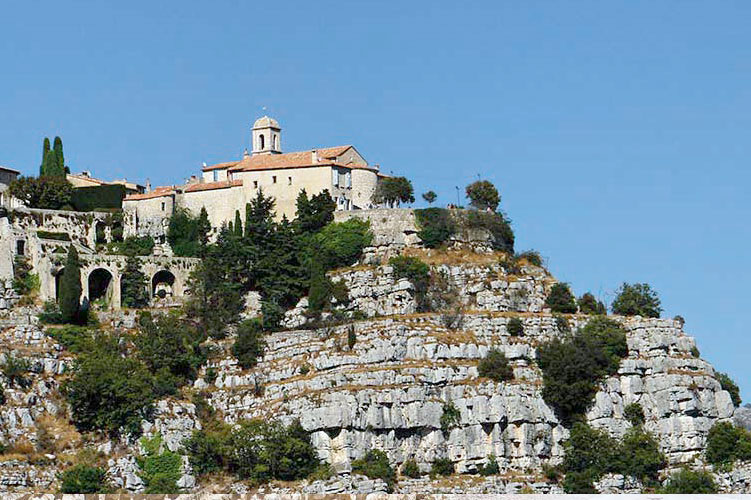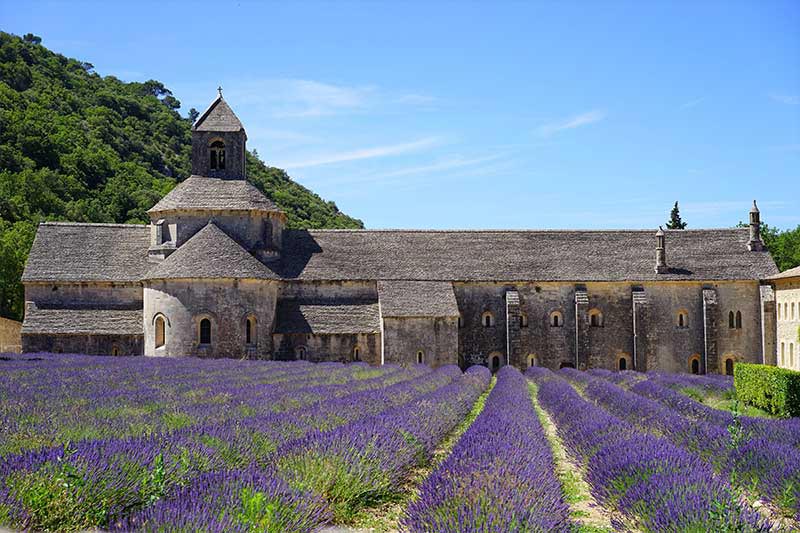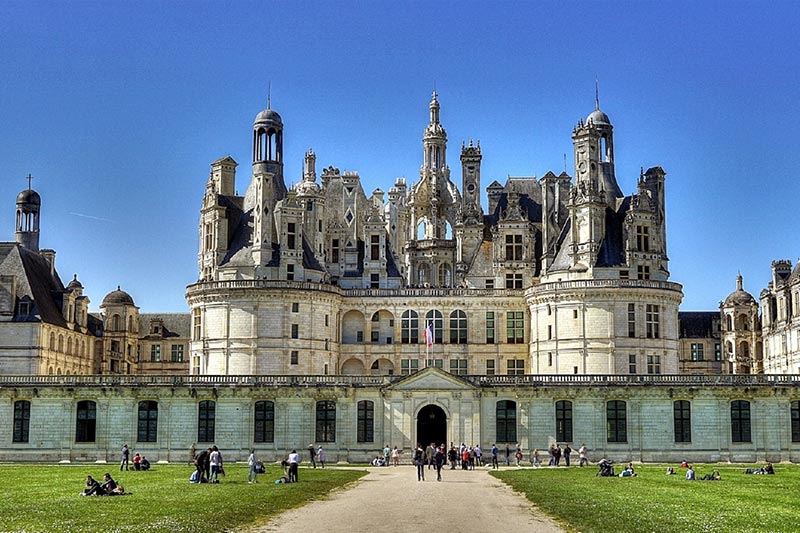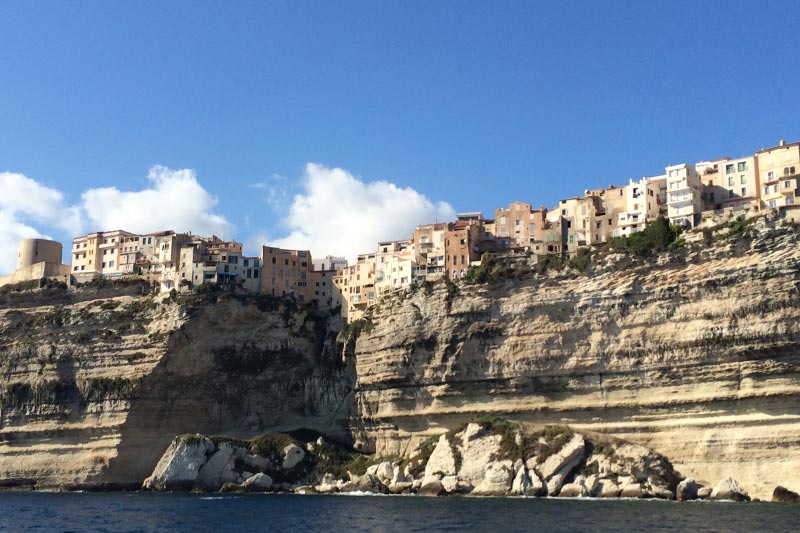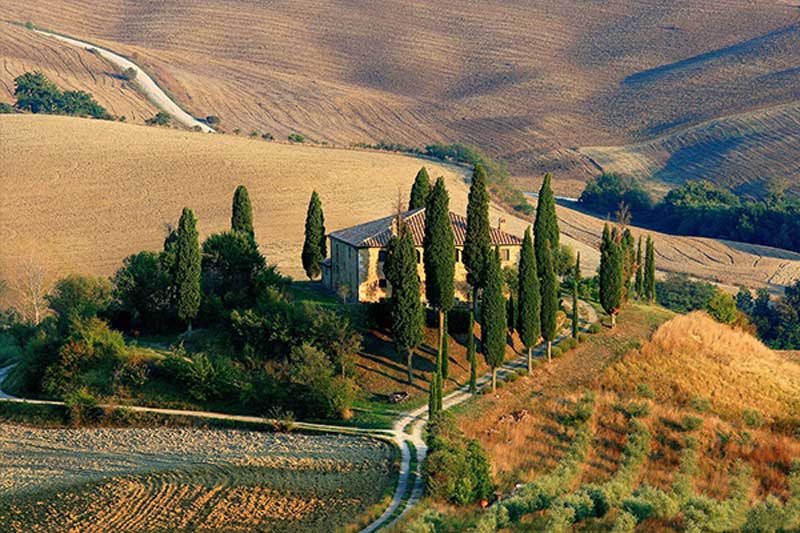Example of what we can create for you.
Provence
In the heart of Provence
Antithesis of chill and rainy northern Europe, Provence is the historical province famous for tall cypress trees, shimmering meadows, medival villages, vineyards, remote valleys, daily markets and fields of lavender. Its cobalt Luberon Mountains, seductive coastline, rippling lavender fields, and honey-stone hilltop villages have inspired everyone from Nostradamus to Van Gogh, Cezanne and Camus.
Ancient Romans settled in Provence in the second century B.C. and even the Vatican moved here from Rome in the fourteenth century. How to enclose such an extraordinary history and bewitching natural beauty into just seven days?
That’s our challenge, experiencing “la vraie Provence” !
Grasse
Starting from Nice we gently climb the rising mountains reaching Grasse, still one of the most fascinating towns of the French Riviera, gate to the Provence and to the culture of this area. Surrounded by fields of Violet and Jasmine, the town has been known for its perfumes since the 17th century and is now widely recognized as the World Capital of Perfumeries. Visit the Cathedral and the Saracen tower and get lost in the narrow medieval streets.
Verdon
Leaving Grasse we climb up the Alpes de Haute Provence to reach the Gorges du Verdon, with its startling turquoise-green color, considered one of the most beautiful canyons in Europe. It is about 25 kilometer long and up to 700 meters deep.
We visit medieval Bargème, a feudal village of the 12° century and classified as one of the French’s most beautiful, whose ruins of his lofty castle Sabran from Pontevès give it a mysterious aspect. We move on to the spectacular viewpoint Le Point Sublime. Looking down the canyon allows a sensational view unto Samson’s Corridor and the turquoise waters of the Verdon river.
Our day ends in Moustiers Sainte-Marie that enjoys an exceptional setting. It is surrounded by the Gorges du Verdon, the Sainte-Croix lake and the lavender fields of the Valensole plateau.
For the night we will be welcomed in the Auberge and Restaurant Bastide de Moustiers (if available) of superstar chef Alain Ducasse. The lovely hillside hotel has 11 graceful suites and the restaurant is winner of several awards for its updated provençal cuisine based on vegetables that grow in the Bastide’s own garden.
Sant-Croix du Verdon
Lake Sainte-Croix is a man-made lake that was formed by the construction (1971-1974) of a concrete, arched, dam, the Dam of Sainte-Croix. High concentration of mineral substances are the cause of the bright green color of the waters.
Forcalquier
After a short stop in the typical Provencal towns Riez and Valensole we arrive in Forcalquier, another pretty medieval town nestled between the Lure and Luberon mountains in Haute-Provence.
For an elevated perspective on this bucolic region we choose to book a private hot-air balloon ride that affords us a bird’s-eye-view of Haute-Provence. An unusual sensation of serenity mixed with exhilaration thanks to France’s Montgolfieres. It takes us 90 minutes over the fields of the valley, ascending to 2,000 feet where birds swoop beneath the basket. After champagne and croissants, everyone pitches in to fold the balloon and stuff it back into its bag before the drive back to town.
Tired and excited it’s time for a spa treatment in the soothing and relaxing atmosphere at the L’Occitane SPA of Le Couvent des Minimes (if available), a seventeenth-century convent that recently opened as an hotel in Mane, a small historical town with an ancient roman bridge close to Forcalquier. We’re going to taste the cuisine of chef Jerome Roy, awarded with a star of the Michelin Guide in the restaurant La Cloitre.
Park of Luberon
Today we start with the slow and smooth drive into the heart of Provence, the Luberon Natural Park, an idyllic piece of rural landscape. The UNESCO-listed nature reserve is based around the rugged mountainous area of the Montagne du Lubéron; the 120,000-hectare reserve encompasses limestone mountains, rolling hills, serene valleys, orchards, and farms.
The drive takes us through Provence’s stunning landscapes, charming villages, unspoiled medieval hilltop hamlets and historic towns to wander among the stalls of the typical markets and to savor the regional cuisine, allowing us to soak up Provençal ambience.
Menerbes
The first town we cross is Apt, a pleasant city so typical of Provence and well reputed for its local products, especially known for its candied fruit. Then we meet Buoux, a handful of houses with a preserved castle, an amazing ruined fort high above and, at the top, a 12th century Romanesque church from where you have an impressive view of the Monts de Vaucluse. Finally it’s time for a loop of three iconic Provençal villages: Lacoste, Ménerbes, and Oppède-le-Vieux.
Lacoste, crowned by a castle which was occupied by the notorious Marquis de Sade in the late eighteenth century and is now owned by fashion designer Pierre Cardin, who holds a music festival here every July.
Ménerbes was the setting for Peter Mayle’s “A Year in Provence”. It is a beautiful, quiet, medieval village with ancient buildings, churches and citadels exquisitely poised over the Luberon Valley, surrounded by vineyards and cherry orchards. We follow the signs to the ‘Maison de la Truffe et du Vin’ which lead through steep lanes of houses with rust-colored shutters, the air suffused with the smell of wood smoke and fresh bread, to the main square with its seventeenth-century town hall topped with a wrought-iron campanile. The Maison’s cellar is stocked with every wine produced in the Parc Naturel du Luberon; tastings are offered, as well as information on truffle harvesting, which starts around November 25 and runs through the end of March.
Before hitting the feudal village of Oppède-le-Vieux, we find a great lunch spot in a leafy square: Le Petit Café. We are sitting at one of the tables on the terrace. Afterward, we spend half an hour exploring this unspoiled hamlet including the church, Notre-Dame-d’Alidon, a little Romanesque gem, a ten-minute walk up a stone path from where we can see the whole plain of the Luberon stretched out below.
Roussillon
We head north towards our night shelter and we notice that the fields around us have suddenly turned a reddish orange. We are approaching Roussillon, where the ochre quarry has one of the most significant deposits in the world. In fact colors are the unique splendors of Roussillon, flamboyant, where reds, yellows, oranges and pinks merge one into the other. Late afternoon take an amazing walk on Ochre Trail, ‘Le Sentier des Ocres‘, an easy walk of abt 45 mn and wander into an otherworldly landscape.
Our night shelter is the Domain des Andéols (if available), an eccentric cluster of stone houses, 20 “Suites Nature” in the middle of the lavender fields spread over 10 unique maisons, decorated with modern art (even some Wharols…), and often hosting exhibitions of famous artists. The restaurant serves the domain’s own olive oil and dozens of varieties of tomatoes under a centuries old plane tree.
Gordes
Our first stop today is Gordes, officially one of the most beautiful villages in France and one of the biggest in Provence with a mighty stronghold that exudes an aura of wealth and power. It’s delightful to wander along its tight alleyways and arcades, among restaurants and cafes, from simple to refined, bakeries, food and art stores.
Just outside Gordes are two unmissable places to visit: the picturesque Abbey Notre Dame de Sénanque with its famed lavender field, one of the most instantly recognizable icons of Provence.
Next, the mysterious Village des Bories, an open-air museum of 20 or so dry stone huts up on the slopes of the Monts de Vaucluse, offering an inestimable testimony of the way of life in Provence, from remote times to present day.
Fontaine de Vaucluse
On the road to our next destination, Fontaine de Vaucluse, we pass through two small and charming villages, Cabrières d’Avignon and Lagnes, usually not in the guidebooks but, anyway, worth a drive.
Fontaine de Vaucluse, taking its name from the mysterious spring feeding the river Sorgue, is a village squeezed into the sharp end of a narrow valley. The gigantic spring, which flows out of a 230 m high cliff, is the most powerful in France and fifth in the world, producing 630 million cubic meters of water every year. In the 50’s, it was even explored by Jacques Yves Cousteau who came with a submersible, never finding the bottom.
L’Isle-sur-la-Sorgue, a few kilometers from the river’s source, is a pleasant walking town, rich of antique shops, art galleries and interior décor boutiques. On Sunday morning the place becomes a large antique and bric-a-brac market; the streets throng with color, life and lovely restaurants.
Towards the end of the day we move towards Avignon and head inside the city’s fourteenth-century ramparts to the hotel La Mirande (if available) which has over seven-hundred years of history. It couldn’t possibly be in a better location: directly opposite the high walls of the Papal Palace, Avignon’s main attraction. The restaurant is in the hands of Florent Pietravalle, new Chef de Cuisine, who created a menu of uncompromising freshness.
Avignon
Today we are off to a grand tour of Avignon’s rich architecture which stretches back to the Romans. First we spend an hour or so inside the Gothic Papal Palace, where the papacy installed its court during the 14th century to escape political infighting in Rome. Then we visit the Notre-Dame-des-Doms, a twelfth-century Romanesque Church on the main square and the gardens just above the Papal Palace, where we get a good view of the Rhône and what’s left of the famous Pont d’Avignon. After a walk through the old city center, past seventeenth-century aristocratic homes, characterized by exterior staircases, and Gothic churches like the fourteenth century Eglise St-Pierre, we leave Avignon.
Next: Châteauneuf-du-Pape, a village 12 km to the north, dominated by a medieval castle built in the 14th century. The area is very famous for its vineyards; in one of them we appreciate a wine tasting of the AOC (Appellation d’Origine Contrôlée) red wine, produced here.
Driving back to the south we don’t want to miss Villenueve-lez-Avignon, a fortress town built on the hills, where cardinals and other prelates built for themselves vast villas during the 14th century, sheltered from view, guaranteeing privacy and safety.
Frigolet Abbey
Frigolet Abbey lies in the heart of the Montangnette. The monastery takes its name from the Provençal word for thyme, the Ferigoule, which grows everywhere in these hills. We can’t visit the Frigolet Abbey without tasting “the Elixir of the Reverend Père Gaucher” or the golden-green Frigolet liqueur made with the herbs from the Montagnette.
Taking care not to drink too much we proceed to Saint-Remy de Provence.
This Provençal market town is synonymous with Nostradamus who was born here, as well as Vincent Van Gogh, who found inspiration in its light and landscapes. That year, 1889, was probably the most difficult of his entire life. It would also prove to be one of his most creative as an artist since he produced about 150 paintings here. After having cut-off part of his left ear in Arles in Dec 1888 and having spent month in the hospital there, Vincent Van Gogh voluntarily confined himself in May 1889 to the the Saint-Paul de Mausole psychiatric institution in Saint-Rémy de Provence.
Today, the once sleepy town has a cosmopolitan feel with its many Cafés and Restaurants.
Domaine de Manville (if available), close to the village of Les Baux, is our lodge for the night. This hotel is a 100-acre estate, originally a working farm, reinvented as a stylish resort surrounded by olive trees. With a large sunny spa, a fitness room, a scenic 18-hole golf course, a bistrot and a gourmet restaurant serving delicious dishes from Provence, the hotel truly captures the essence of the Alpilles region.
Les Baux en Provence
We are fortunate to wake up next to one of the most amazing villages of Provence, Les Baux-de-Provence, officially classified and labelled as one of the most beautiful villages in France with an exceptionally rich cultural heritage. Long, narrow cobblestone streets between grey-stone medieval buildings, painstakingly restored, characterize the ancient village. Interesting is also the Chateau-Fortress: a high rocky pinnacle topped with the ruins of the castle. A path with stony steps leads us past the troglodyte caves out to the high walls and fortress ruins and up to the top of the high rocky ridges. The climbing is a little arduous, but it’s worth it for the view from up there is breathtaking.
Arles
Our next destination is Arles, a UNESCO World Heritage Site, much bigger than the tiny hamlets seen so far, but with a very interesting historical city center.
On the way we pass through two lovely villages, Maussane-les-Alpilles and Paradou. We make a quick stop in Maussane to taste its famous olive oil.
Once in Arles we head on foot to the Théâtre Antique, then to the Amphithéâtre with a capacity of 20,000. Climb the tower for a magnificent view of Arles and the Rhône River and then stroll down to the Baths of Constantine at the Église St-Trophime with its impressive Romanesque West Portal on the Place de la République.
Vincent van Gogh lived in Arles in 1888 for more than a year. After two years in Paris, he was tired of the hustle and bustle of city life and longed for the sunshine and vibrant colors of the south. When he got to Arles, Vincent took a room at the hotel-restaurant Carrel, and later, one at Café de la Gare. In early September, he moved into the Yellow House, which he had begun using as a studio on May 1. Paul Gauguin joined him there in October and they worked together for 2 month. Van Gogh experienced great productivity in Arles before suffering a mental breakdown. It was here, in, what he called the Yellow house, on the night before Christmas Eve 1888, where he sliced off his left earlobe and gave it to a prostitute who fainted on the sight of it…
Aim to leave Arles in the afternoon to drive to Aix-en-Provence’s best hotel, La Villa Gallici (if available), only a 15-minute walk from the town center. This eighteenth-century, honey-colored mansion, surrounded by cypress trees and lavender. 22 Provençal rooms outfitted in toile, cream, and crimson Louis XV furnishings. The restaurant pairs Provençale, French, and Mediterranean dishes with Bordeaux, Burgundy, and local wines—all served on the terrace during the summer.
Aix-en-Provence
Aix-en-Provence is to France what Boston is to the United States. It’s an elegant, aristocratic charmer with the quintessential plane-tree lined boulevard, the Cours Mirabeau, handsome seventeenth-century hotels and seductive mini-squares with gurgling fountains. It has been a university town for centuries.
We spend our time wandering the streets north of the Cours Mirabeau, finding a diminutive square with a fountain at every turn, stopping for a coffee at one of the many street-side cafés, legendary places where Emile Zola, Cézanne and Albert Camus found their inspiration, spending a contemplative half-hour in the wonderful Cathédrale St-Sauveur, then heading to the Musée Granet and admire Flemish, Dutch, Italian, and French paintings and sculptures from the sixteenth to the twentieth century.
Cassis
For lunch we’re heading to the Mediterranean Sea, to Cassis, Provence’s most charming seaside hangout. It’s a busy working harbor, so expect less glamour and more fish than at its ritzy Côte d’Azur neighbors Cannes and St-Tropez. We should have time before lunch for a promenade along the harbor and for exploring the natural coves between Les Calanques on a motorboat tour and maybe, if it’s warm, dive into the azure sea.
Back to the mainland we find Nino’s Restaurant on the west side of the harbor, a local favorite, founded in 1962, where we can order the region’s specialty, the Bouillabaisse.
Time to go now, a rich wine experience is waiting for us in the Commanderie de Peyrassol, a 950-acre estate hidden away in the countryside. Here, for hundreds of years wine and history have gone hand in hand. Standing above the village of Flassans-sur-Isole, in the heart of the hills of the Var, the Commanderie de Peyrassol was founded in the 13th century by the Knights Templar. This great expanse of fertile soil was a popular staging post and a place of rest for large numbers of pilgrims setting off for the Holy Land. As one of the jewels of Provence, the domaine has always maintained its agricultural and winegrowing traditions. We will visit the wine cellars, taste the fine AOP Côtes de Provence wines and discover the domaine before enjoying the cuisine of chef Guillaume Delaune with a distinctly Provençal flavour, accompanied by local wines. We’re going to spend our last night in Provence in one of the ten new guest country- or hunting-style rooms.
A few kilometers away lies Saint-Maximin-la-Sainte-Baume, where we’ll spend some time admiring the enormous St. Madeleine Basilica.

